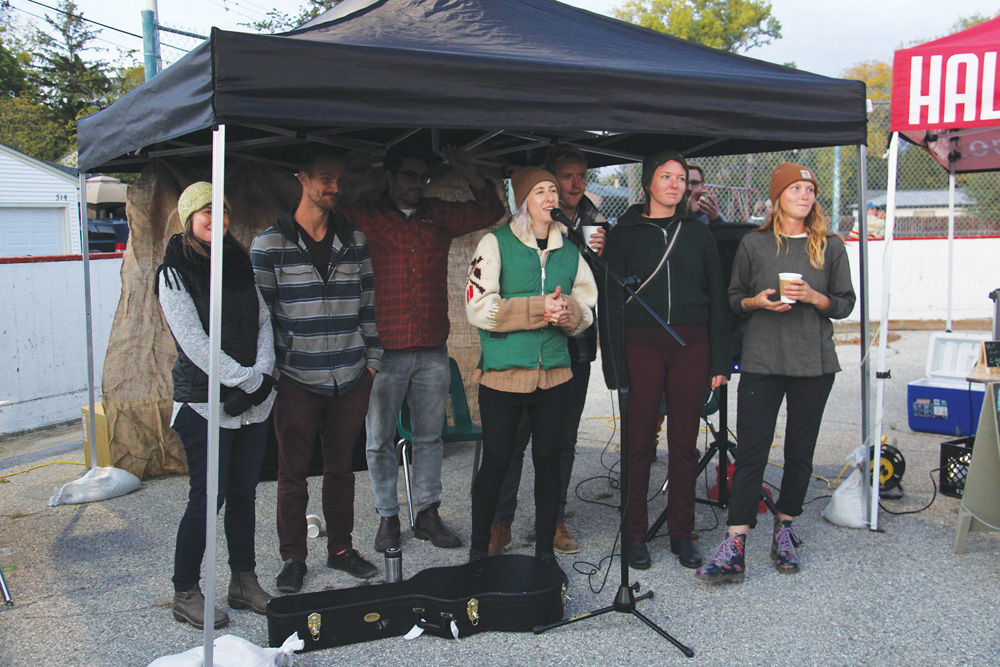Forget the stereotype of the elderly farmer selling some garden surplus or a few jars of homemade pickles at the Saturday morning farmers’ market.
Vendors selling homegrown vegetables, preserves and meat today are just as likely to be their energetic and technically savvy grandkids — or at least their age.
Their small businesses aren’t just ‘a summer thing’ either; many own or rent some land, and operate roadside stands and year-round on-farm stores, U-pick fruit farms and community-shared agriculture ventures (CSAs). When the farmers’ markets close in the fall, they sell their homegrown product online or through buying clubs or other types of distribution networks.
Read Also

First Manitoba hay harvest short
Manitoba’s first hay cut of 2025 isn’t huge by initial counts, but things are worse farther west in the Prairies
Manitoba has seen a sharp increase in direct farm marketing.
According to Manitoba Agriculture, Food and Rural Initiatives, in 2009 Manitoba already had the second-highest number of farmers’ markets and CSAs per capita in Canada, behind only Prince Edward Island and Nova Scotia.
It’s been on the increase since. Demand for local food has exploded and along with it the burgeoning number of young people looking to capture new opportunities including a rural lifestyle and starting some type of small-scale agricultural business.
That’s been evident for a while in attendance at the annual Direct Farm Marketing Conference, this year marking its 20th year. The annual conference’s attendees defy typical trends of a traditional farm meeting.
“They’re definitely getting younger,” says Joy Lorette, a business development specialist with Manitoba Agriculture, Food and Rural Development (MAFRD) who helped with planning the DFMC since nearly its beginnings.
Those youthful faces belong to a vibrant, emerging group of very small-scale farmers and processors, raising multiple types of livestock and crops, and selling farm-grown products direct to the public.
Twentieth anniversary
The DFMC has been encouraging the growth of rural employment and business creation since its beginnings in 1995.
That year Department of Agriculture home economists teamed up with staff of the then department of rural development to host the event, said Susan Nicoll, manager of the North Interlake MAFRD GO office in Arborg today. At the time, the event attracted mostly those selling at farmers’ markets which were just getting organized at the time.
“The conference has tried to provide marketing ideals and tools for farmers or anyone who’s involved in some form of direct marketing,” said Nicoll.
More recently MAFRD has lent support to smaller-scale and direct-marketing ventures through The Great Manitoba Food Fight, Open Farm Day and the Buy Manitoba program, run in conjunction with the Manitoba Food Processors Association.
Grassroots groups have formed as well, including the Rural Tourism Association and the Farmers Marketing Association, now listing 44 of the estimated 70 markets now operating throughout Manitoba.
Direct marketing has become big, or at least bigger business in terms of economic impact too.
In response to growing demand starts to address some key regulatory issues small-scale processors struggle with, the province released a 65-page report earlier this winter that estimates annual sales of direct-marketed farm-grown product in 2012 valued at anywhere between $56 million to $79 million. Farmers’ markets sales (including crafts) are estimated at approximately $241 million. The numbers are gleaned from internal provincial department reports as well as extrapolations from more comprehensive data collected by Alberta Agriculture and Rural Development that shows sales there tripled between 2004 and 2012.
That’s a big leap forward from the mid-1990s, when Department of Agriculture staff were holding workshops urging newbies at farmers’ markets to toss their Cheese Whiz jars and use safer preservation methods.
But as last month’s small-scale sector report also points out, there’s considerable more potential for direct marketing as an emerging sector, if it gets some strategic technical, financial, advisory and policy supports the report says are currently lacking.
The province says it is committed to assigning staff to provide extension support in smaller-scale production and processing the report calls for.
Dr. Wayne Lees, author of Advancing the small scale, local food sector in Manitoba will speak to the report’s findings at this weekend’s Direct Farm Marketing Conference being held at Brandon University.
Other speakers will share information on production and marketing of grass-fed beef, pricing strategies for direct marketers, extending the growing season, and food safety.
“We want everyone to succeed in their operations whether it be at a farmers’ market, market garden, roadside stand, U-pick, CSA, culinary tourism, agri-tourism or through e-commerce,” said Waldo Thiessen, a founding organizer of the event and general secretary of the Prairie Fruit Growers Association.
“If we can help provide information to delegates to grow the industry, then I would say we are reaching our objectives,” he said.




















